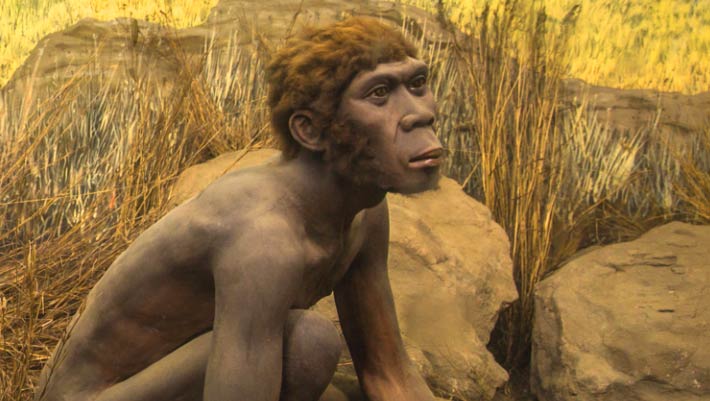The discovery of a new species of ancient human in the Philippines has reshaped our understanding of early human evolution in Southeast Asia. Named Homo luzonensis, this species was identified from fossil remains found in Callao Cave on Luzon Island. Dated to around 50,000–67,000 years ago, this remarkable find suggests that multiple hominin species coexisted in the region, challenging previously held theories about early human migration and diversity.
Discovery of Homo luzonensis
The first hints of an ancient human presence in Luzon emerged in 2007, when a single foot bone was discovered in Callao Cave. However, it wasn’t until 2019 that researchers uncovered more fossils, leading to the classification of an entirely new human species.
Located in northern Luzon, Callao Cave has long been a site of archaeological interest. During extensive excavations, researchers unearthed 13 fossilized remains, including teeth, finger bones, and parts of a femur. These remains belonged to at least three individuals, providing strong evidence for a distinct species.
Homo luzonensis exhibits a mix of primitive and modern characteristics:
Teeth: Smaller than those of Homo erectus, yet more primitive in shape, suggesting a unique evolutionary adaptation.
Curved Finger and Toe Bones: Indicating strong climbing abilities, similar to those seen in earlier hominins like Australopithecus.
Small Stature: Scientists estimate that Homo luzonensis may have been relatively short, similar to the Homo floresiensis, or “Hobbits” of Indonesia.
Limb Proportions: Some evidence suggests that Homo luzonensis had limb proportions that differed significantly from both modern humans and other early hominins, further supporting the idea that it evolved in isolation.
Evolutionary Significance
The discovery of Homo luzonensis raises significant questions about early human migration and evolution in Asia.
Homo luzonensis lived during the same period as:
Homo sapiens (modern humans)
Homo floresiensis (found on Flores Island, Indonesia)
Denisovans (a mysterious hominin known from fossils in Siberia and Tibet)
This suggests that Southeast Asia was once home to various ancient human species, each adapted to different environments.
Like Homo floresiensis, the small size of Homo luzonensis may be a result of island dwarfism. In this evolutionary process, species shrink over time due to limited resources and lack of predators. This phenomenon has been observed in other island-dwelling animals, such as the dwarf elephants and giant rats in the same region.
Additionally, some scientists speculate that Homo luzonensis may have evolved from an earlier Homo erectus population that reached Luzon and subsequently adapted to the island’s unique conditions over thousands of years.
Implications for Human Migration
Traditionally, the migration of early humans was believed to follow a linear pattern, moving out of Africa and spreading gradually. However, Homo luzonensis challenges this view.
The presence of Homo luzonensis on Luzon suggests that early humans reached isolated islands much earlier than previously thought. The only way to reach Luzon from mainland Asia is by crossing open water, implying that ancient humans may have had rudimentary seafaring abilities.
This idea is reinforced by the discovery of stone tools on Luzon dating back over 700,000 years, indicating that early hominins—possibly the ancestors of Homo luzonensis—had already reached the island long before Homo sapiens arrived.
DNA analysis has yet to be conducted on Homo luzonensis fossils. Still, some scientists speculate it could be related to Denisovans, a group that interbred with modern humans and left genetic traces in Southeast Asian and Pacific Island populations. This could provide crucial insights into how different human species interacted and evolved in the region.
Archaeological and Genetic Challenges
Studying Homo luzonensis presents several challenges:
Lack of DNA: The hot and humid climate of the Philippines has made DNA extraction difficult, limiting our ability to compare Homo luzonensis with other hominins.
Few Fossils: With only 13 fossilized remains, reconstructing the entire physical appearance and behavior of Homo luzonensis is challenging.
Uncertain Lineage: Without genetic data, scientists must rely on anatomical comparisons, which can sometimes be misleading in determining evolutionary relationships.
Unknown Extinction Causes: It remains unclear why Homo luzonensis disappeared. Possible reasons include climate change, competition with Homo sapiens, or natural disasters such as volcanic eruptions.
Future Research and Questions
The discovery of Homo luzonensis raises many intriguing questions that future research may help answer:
Did Homo luzonensis interact with Homo sapiens? Evidence of modern human presence in the Philippines around 30,000–40,000 years ago suggests a possible overlap in time.
What were their tools and diet? While no tools have been directly associated with Homo luzonensis, researchers speculate that they may have used simple stone tools and relied on a diet of fruits, plants, and small animals.
Are there more undiscovered hominin species in Southeast Asia? Given the region’s complex prehistoric history, scientists believe other unknown human species may have existed alongside Homo luzonensis.
Conclusion
The discovery of Homo luzonensis in the Philippines has transformed our understanding of early human diversity and migration. It suggests that hominins were more adaptable and widespread than previously believed, adding another layer to the complex story of human evolution. As further research continues, scientists hope to uncover more about this mysterious species and its place in our ancient past. With advancements in archaeological methods and genetic analysis, we may one day unravel the full story of Homo luzonensis and its role in human prehistory.




